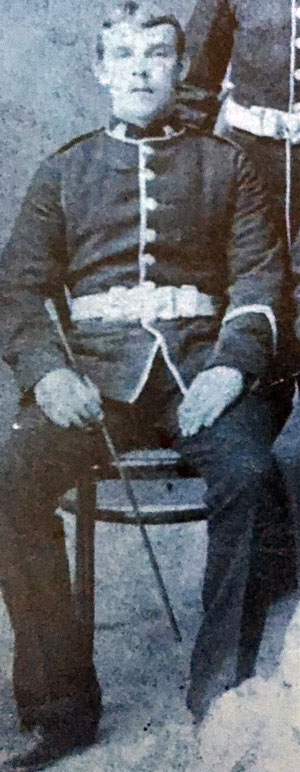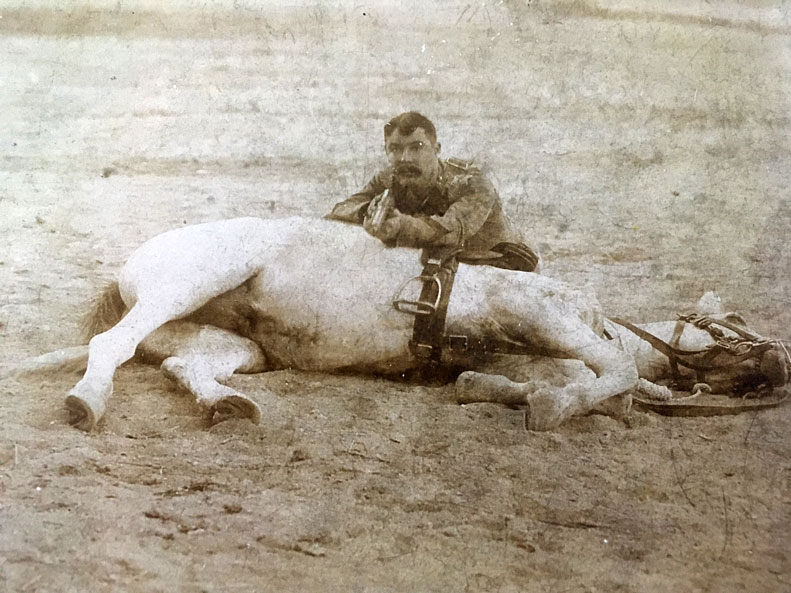Private Louis Ball

Louis Ball was born (with the name Luigi Alexander Ball) on 16 January 1873 at 26 Tonbridge Street, St Pancras, London, one of at least six children of horn polisher George Samuel Ball and his wife Lucy Jane (née Pickering). His father died when Luigi was just a teenager, but soon after this his mother married railway porter William Tildsley.
By 1892 Ball was working in London as a carman. He enlisted at Guildford on 25 January that year in the Royal West Surrey Regiment (No.3791), serving with that regiment at Malta from 9 April 1892, then in the East Indies from 17 January 1895.
On 31 May 1895 Ball transferred to the Hussars of the Line (No.3968) and the following day was posted to the 11th (Prince Albert's Own) Hussars. He served with that regiment on the Punjab Frontier Campaign (1897-98) and in Egypt from 31 October 1899. On 16 March 1901 he sailed with his regiment to join the Boer War Campaign in South Africa, returning to the UK on 7 August 1902. (He was awarded the Queen's South Africa Medal with Transvaal, Orange Free State, Cape Colony, 1901, and 1902 clasps.)
Ball was demobilised on 9 August 1902 and the following month was transferred to the 1st Class, Army Reserve. He was discharged on 24 January 1904 on the completion of his 12 years' engagement, but soon after, re-enlisted for 4 years in Section D of the Army Reserve.
Around 1902 Ball had married widow Ellen Sharpe. At the time of the 1911 Census they were living at 47 Clarendon Street, St Pancras with their four children and two children from Ellen's previous marriage, Louis working as a coal carman.
Ball re-enlisted in the Hussars of the Line on 24 or 25 August 1914 (No.15568). He embarked for France on 12 November 1914, where he joined the 3rd (King's Own) Hussars south of Bailleul on the Ypres front.
In September 1917, as part of a general reduction in the size of the cavalry, a number of men of the 3rd Hussars left the regiment. The war diary of 15 September records that:
56 other ranks of the regiment proceeded by rail from Hesdin to the Rouen Base for transfer to Infantry on the reduction of the 100 dismounted men allowed to Cavalry regiments.
Between twenty-eight and thirty-four of these men, including Ball, were transferred to the North Irish Horse, joining the 1st (NIH) Regiment in the field on 11 October. Ball was issued regimental number 2710.
In February-March 1918 the regiment, which had been serving as corps cavalry to V Corps, was dismounted and converted to a cyclist unit. This meant a 25 per cent reduction in the regiment's numbers. It is probable that Ball was one of those transferred out, re-joining the 3rd (King's Own) Hussars in April.
On 4 February 1919 Ball was demobilised and transferred to Class Z, Army Reserve.

I am grateful to Linda Ball for providing the images of her Grandfather.
